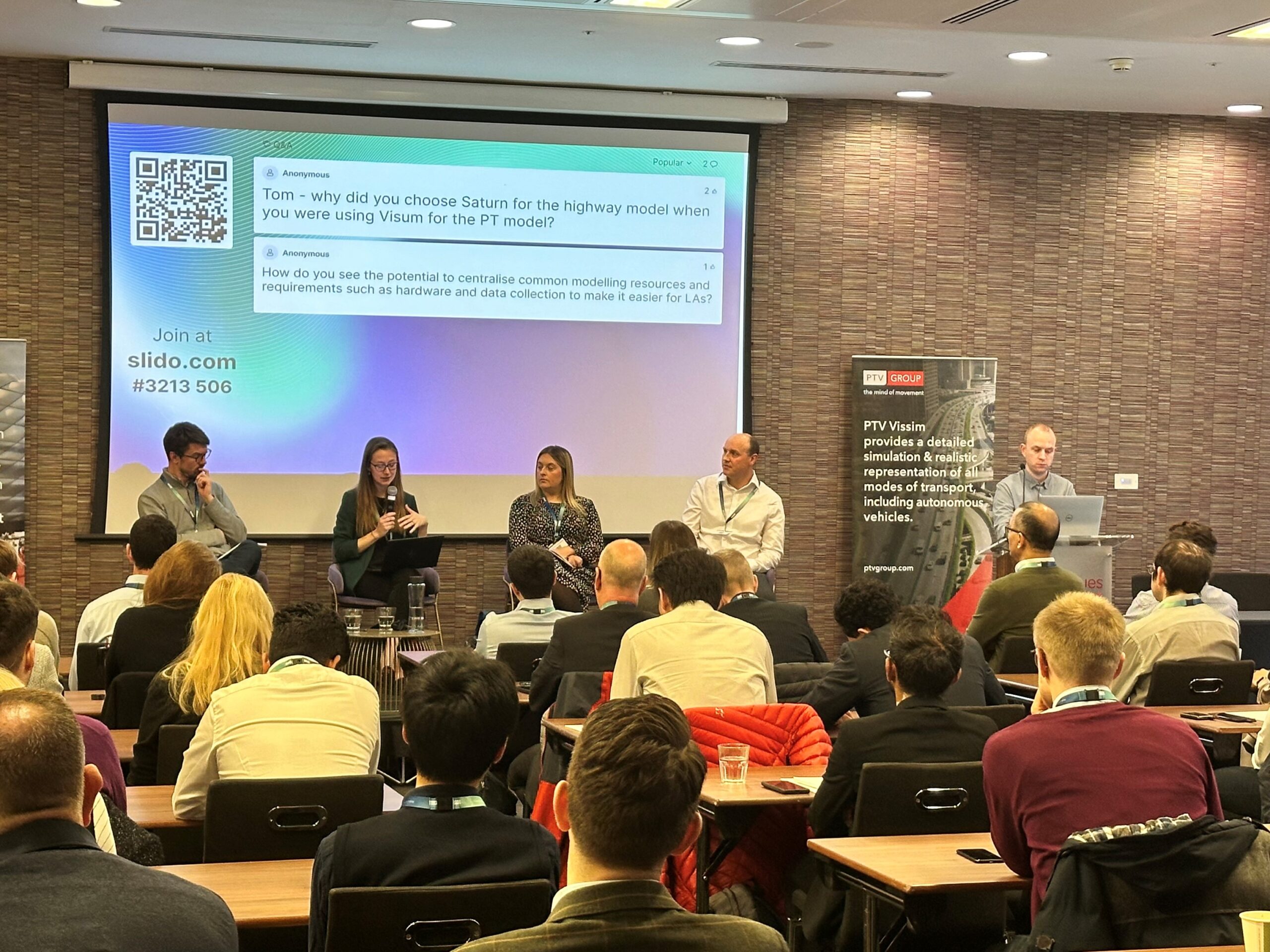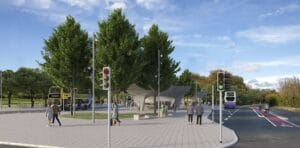Local authorities, consultants and data providers are being encouraged to collaborate more closely in their transport modelling work to speed up and standardise the way new projects are planned and traffic is managed in real time.
More than a hundred modelling professionals meeting at the PTV User Group annual meeting in London heard an expert panel discuss the future of transport and modelling and how disjointed planning was making it more difficult to achieve political buy-in.
“It’s surprising how common it is for local authorities to not speak to their neighbours, even though they face very similar challenges” commented Charlotte Saunders, Associate Director in Transport Modelling at Jacobs. “We have been working to foster collaboration, and that is achieving positive results such as economies of scale around data collection.”
That view was echoed by Tom Godsmark, Data and modelling manager at the West of England Combined Authority who is working to standardise modelling across the region’s local authorities. “We are looking to standardise our data collection across authorities to strengthen our models and use them to clearly communicate the case for schemes.”
That communication was another key take-away from the discussion, with agreement that there is a need for clear and effective ways of translating complex models into simple-and-quick-to-understand summaries of benefits of road schemes. “If you had 30 seconds with a mayor to decide the fate of a scheme, what tools would you use to convince them this is what we need to do?” Mr Godsmark asked.
Caroline Humphrys, the Department for Transport’s Local Authority Capability and Capacity Lead Analyst explained the need for robust modelling that can be easily reviewed, to support decision makers’ decisions when reviewing business cases. She stated that: “The DfT has produced a Modelling and Appraisal Self-assessment Toolkit, to support Local Authorities and their consultants understand the modelling and appraisal reporting requirements”.
Michael Banham, an engineer at City of York Council, also joined the discussion, giving his thoughts on managing local road networks and the use of data and models to support this decision process.
The panellists agreed that the muti-modal capabilities of modelling software are invaluable in their current challenges to reduce reliance on the car, help decarbonise the sector, and shift more trips to public transport, cycling, and walking. “Modelling allows us to understand the conflict between car, bus and active travel.
Charlotte Saunders added that, whilst modelling itself can’t actually encourage modal shift, it does provide objective analysis to whether an active travel scheme is going to work, while Caroline Humphrys agreed that regular communication with Active Travel England on the design and appraisal of schemes is vital to the development of the strategic and economic cases.
The meeting also heard how traffic managers can change signal timings and use Variable Message Signs or social media to communicate with drivers, but that having more traffic management tools and resources would help us maximise the benefit.
The panel agreed that to improve the buy-in and use of modelling it is necessary to ensure early engagement with all stakeholders including DfT, and to better communicate model results and collaborate with neighbouring authorities. It was also agreed that moving towards more regularly updated baseline models post-Covid, standardising data and agreeing a roadmap for future model requirements will lead to increased improvements.
“The event is thoughtfully organised and delivered by the PTV team to include diverse topics, honest feedback and addresses current industry trends and developments,” explained session moderator Laurence Chittock, Principal Modeller for PTV UK. “It has rightly won its place as one of the top industry events and next year’s 25th consecutive event is proof of its ongoing success. I look forward to attending next again year and I highly recommend it to everyone interested in transport modelling.”
(Picture – PTV)



























